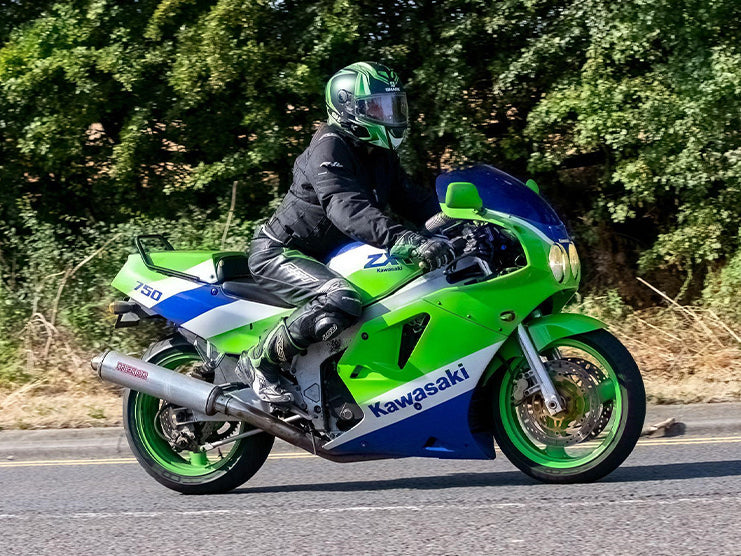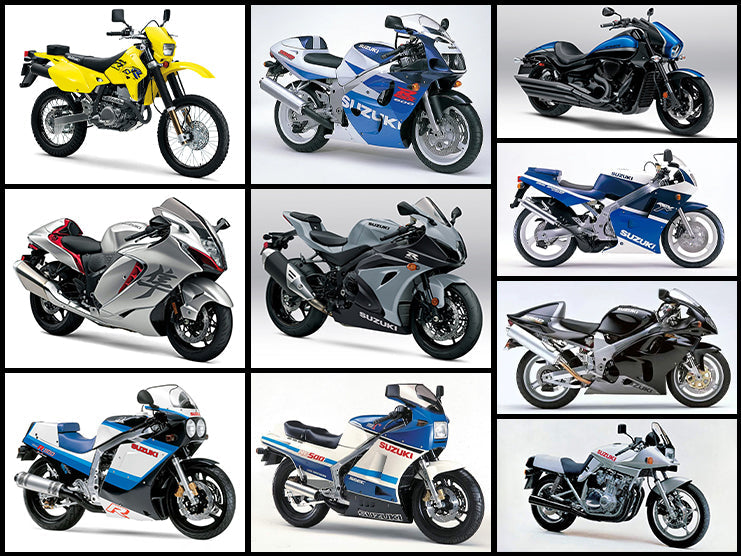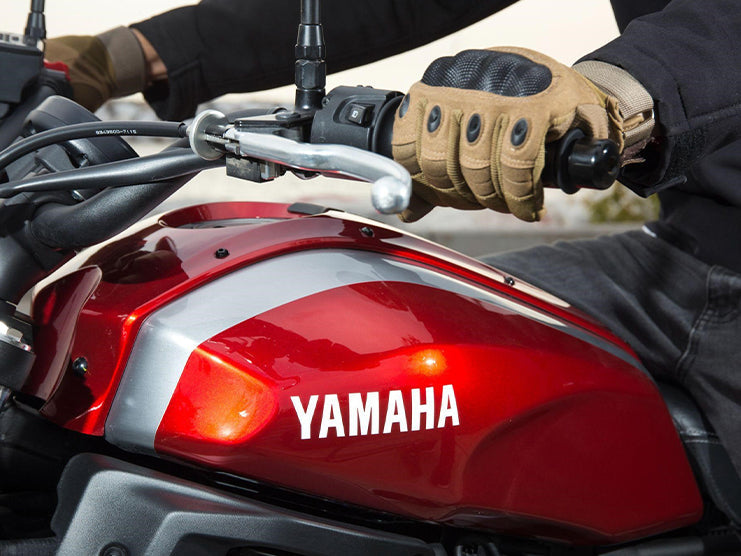Table of Content
Kawasaki is one of the four Japanese giant motorcycle manufacturers that produce the world’s most durable motorcycles. It is widely recognized as the manufacturer of the world’s fastest gas-powered production motorcycle. Other than power, durability, and agility, Kawasaki also produces one of the most affordable motorcycles. The Kawasaki lineup has motorcycles for riders belonging to almost every skill level, including beginners, intermediate, and expert riders. Unlike top American motorcycle brands like Harley Davidson and Indian, Kawasaki specializes in producing high-speed motorcycles, particularly sports bikes. However, like most Japanese motorcycle brands, the parent company, Kawasaki Heavy Industries is one of the leading manufacturers of aircraft equipment, ships, and engines. Read this article to learn about the remarkable history of Kawasaki.
1. The Remarkable History of Kawasaki
1865
In 1865, Kojiro Matsukata was appointed as the Prime Minister’s secretary. He was a great businessman, head of Kawasaki Dockyards, and the President of Kawasaki Shipyard.
1878
1.1 The Origin of the Company

Kawasaki’s history dates back to 1878 when the founder of the company, Shozo Kawasaki established Kawasaki Tsukiji Shipyard in Tokyo, Japan.
1890
1890 marked the year in which Japan successfully built its first steel ship. Previously, ships were built from iron in Japan.
1894
In 1894, the demand for ships increased due to the extreme tension between China and Japan that resulted in the 1894 Sino-Japanese War.
1896
As a result of the sudden boom in sales, Kawasaki Dockyard Ltd. appointed Kojiro Matsukata as its first president, who was one of the longest-serving presidents of the company.
1897
After becoming a publicly traded company, Kawasaki Dockyard built its first passenger-cargo ship, known as the Iyomary 727 GT.
1911
1.2 The first Kawasaki Locomotive
In 1911, due to continuous research and efforts, the Kawasaki train industry successfully built its first locomotive.
1918
1.3 Establishing Kawasaki Aircraft Company
After successfully establishing its brand name in ship and train manufacturing, Kawasaki stepped into aircraft manufacturing in 1918.
1922
1.4 First Kawasaki Metal Aircraft

In 1922, Kawasaki built its first aircraft made primarily of aluminum.
1928
After completing 32 years as the Kawasaki Dockyard’s president, Kojiro Matsukata resigned from the post in 1928.
1933
1.5 Manufacturing Rokkogo Cars

The world suffered from a major economic recession during the 1930s, causing some of the major global companies to suffer significant losses and even discontinuation. Meanwhile, Kawasaki kept an eye on the future and produced heavy-duty and large vehicles, including the Rokkogo cars, trucks, and buses.
1954
1.6 Building Kawasaki-Bell 47D1 Helicopter

Kawasaki collaborated with Bell Aircraft Manufacturer to build Japan’s first helicopter, known as the 47D1.
1961
1.7 First-Time Participation in a Motocross Race
In 1961, Kawasaki made its first appearance in the 1961 motocross race held in Japan. To participate in this race, a modified Kawasaki motorcycle, based on the Kawasaki B7, was used.
1962
1.8 Meguro Manufacturing
To manufacture motorcycles, Kawasaki Aircraft collaborated with Meguro Manufacturing Company. Kawasaki Aircraft bought this company and it eventually became Kawasaki Motor Sales. The first few Kawasaki motorcycles had an emblem of Kawasaki Aircraft on their fuel tanks
1964
1.9 Building Bullet Trains
In 1964, Kawasaki Heavy Industries started manufacturing the world’s most efficient, fastest, and technologically advanced trains, known as the bullet trains.
1966
1.10 Beginning of the Motorcycle Legacy
Kawasaki started its motorcycle manufacturing operation in the U.S. in 1966 by establishing a subsidiary sales center in Chicago. In 1996, the company also introduced the Kawasaki W1 motorcycle in the North American market which turned out to be a great success for Kawasaki in the U.S. The Kawasaki W1 was the first largest-engine motorcycle produced by Japan at that time.
1968
1.11 Establishing Kawasaki Motors Corp
In 1968, two of the Kawasaki Motors Corporation subsidiaries in the U.S., including the Chicago factory and the Eastern Kawasaki Motorcycle Company merged to form the Kawasaki Motors Corp. (KMC), California.
1.12 Green Became the Color of Kawasaki

In 1968, Kawasaki selected lime green as its official color. The lime green has a positive historical background and significance. It is considered to symbolize “good health”, “strength”, and “rebirth”.
1.13 The First Three-Cylinder Engine Motorcycle - Mach III

A team at the Kawasaki Motorcycle was assigned the task of developing a unique and innovative motorcycle, resulting in the production of the Kawasaki Mach III, a classic motorcycle powered by a 500 cc three-cylinder engine. The engine was capable of producing impressive power. The engine layout was designed to ensure more horsepower. However, in the beginning, the Kawasaki Mach III was a failure due to severe engine heating issues. Kawasaki continued to work on the three-cylinder engine to make it rider-friendly. The heating issue was finally resolved by designing larger cooling fins on the engine cylinders.
1969
After the successful experimentation of the Kawasaki Mach III, production was started in 1969.
1.14 Daytona 200 Race
In 1969, all Kawasaki motorcycles, including the Kawasaki A7RS and the Kawasaki A1RAS that participated in the Daytona 200 race were painted in lime green color.
1.15 First Industrial Robot
In 1969, another milestone was achieved by Kawasaki when it prepared the World’s first industrial robot. These industrial robots were designed to handle and manage several manufacturing processes, including sealing, painting, welding, and assembling.
1971
1.16 The introduction of the Original H2R

In 1971, Kawasaki produced the classic H2R which created a great spur among the motorsports racers. It was powered by a 748 cc three-cylinder engine capable of a horsepower of around 100-110 hp.
1972
1.17 Introducing Legendary Kawasaki Z1 900

Kawasaki introduced a new project, known as the New York Steak, which gained hype in no time. As a result, the legendary Kawasaki Z1 900, the ultimate performance motorcycle was built that featured one of the most powerful, 900 cc inline four-cylinder engines. This motorcycle also became commonly known as the Universal Japanese Motorcycle (UJM).
1973
By 11973, the KMC had become a major motorcycle manufacturer as it strengthened its distribution and dealer network to provide better services to the customers.
1.18 Gary Nixon Win on Green Meanie
Gary Nixon, who was a sports bike racer, won the 1973 American Motorcyclist Association (AMA) Road Racing Championship on the classic Kawasaki H2R. This motorcycle was given the nickname Green Meanie.
1.19 Manufacturing Jet Ski
The KMC also started a personal watercraft manufacturing company. The personal watercraft it produced were initially referred to as Water Jets and Power Skis. Later, the name Jet Ski became official for these personal watercraft.
1974
1.20 Introduction of Kawasaki KX Lineup
In 1974, Kawasaki Motors launched its famous KX series, designed for motocross riders. It was available in three different engine sizes, including 125 cc, 250 cc, and 450 cc. The Kawasaki KX lineup had a taller front end, knobby tires, and adequate ground clearance for better off-roading performance.
1.21 First-Ever Manufacturing Site of Japanese Manufacturer in the U.S.
In 1974, Kawasaki also established a new motorcycle manufacturing factory in Lincoln, Nebraska, U.S. It was the first-ever motorcycle manufacturer of a Japanese automobile company in the U.S.
1975
1.22 Kawasaki KZ Series Launched
In 1975, Kawasaki launched its KZ series. The first Kawasaki model was the Kawasaki KZ400, fitted with a 398 cc twin-cylinder engine. The company also started manufacturing Jet Ski in the same year at the new manufacturing plant.
1984
1.23 The Birth of the Kawasaki Ninja

Kawasaki stepped into the sports racing market by introducing the Kawasaki Ninja GPZ 900 in the sports bike category. It turned out to be a revolutionary innovation of its time due to being powered by a 900 cc liquid-cooled, four-cylinder engine.
1985
1.24 The First Kawasaki Cruiser
In 1985, the first Kawasaki cruiser rolled out of the Kawasaki factory, powered by a 699 cc liquid-cooled, V-Twin engine.
1988
In 1988, Kawasaki introduced a four-wheel vehicle, called the Mule. It was a versatile and lightweight utility vehicle to carry and transfer stuff. The Mule was most commonly used in fields and factory settings.
1989
1.25 Jeff Ward Winning AMA Motocross Race on Kawasaki KX500
Another famous American motocross racer, Jeff Ward, claimed a victory in the AMA Motocross Racing Championship in 1989 on the Kawasaki KX500.
1990
In 1990, Jeff Ward won the AMA Motocross Racing title second time on his Kawasaki KX500.
Another American motocross racer, Jeremy McGrath, won the AMA Supercross title in 1990 on the Kawasaki KX125.
1991
1.26 Eurotunnel
In 1991, Kawasaki assisted in the project of the Eurotunnel with its Tunnel Boring Machines (TBM) to link Europe and the U.K.
1995
In 1995, Stefan Everts, a Belgian motocross racer made Kawasaki win its first World Motocross Championship on the Kawasaki KX250.
1.27 The Introduction of the Kawasaki ZX-6R

The Kawasaki Ninja ZX-6R was introduced in 1995.
1996
In 1996, another World Motocross Championship title was won by Sebastian Tortelli for Kawasaki in the 125 category.
2001
1.28 Establishing U.S.’s First Train Factory in Lincoln, Nebraska
In 2001, Kawasaki Motors Corporation launched its train manufacturing facility in Lincoln, Nebraska, U.S. The train production plant was designed in a way that all the manufacturing phases, including assembling, painting, testing, and outfitting were performed in a single production line.
1.29 Andrew Pitt on Kawasaki Ninja ZX-6R
The Kawasaki Ninja ZX-6R was continuously upgraded over time and in 2001, Andrew Pitt won the first Super Sport World Championship for Kawasaki.
2005
In 2005, Kawasaki became a highly versatile motorcycle manufacturer when it produced one of the most popular ATVs of its time, the Kawasaki Brute Force 750 4x4i. It was fitted with a 749 cc liquid-cooled V-Twin engine and a continuously variable transmission (CVT). The Kawasaki Brute Force is one of the most reliable and powerful ATVs in the market.
2007
2007 was one of the most successful years for Team Green as Kawasaki won the motocross world championship in all three categories. James Stuart won the Supercross title in the 250 cc category on the Kawasaki KX250F, Ben Townley won the Supercross Light East title, and Ryan Villopoto won the Supercross Light West title on the Kawasaki KX250F.
2008
1.30 Entering the World of Recreational Vehicles
In 2008, Kawasaki entered the world of recreational vehicles by introducing the Kawasaki Teryx 750 4x4. It was also powered by the 749 cc liquid-cooled V-Twin engine for off-roading.
2011
In 2011, Ryan Villopoto upgraded himself to compete in the 450 cc category on the Kawasaki KX450F and won four consecutive Supercross titles.
2013
In 2013, Ryan Villopoto won another AMA Supercross title, becoming one of the top-ranked motocross riders in AMA history.
1.31 Tom Sykes Winning World SBK Title
In 2013, Tom Sykes won the World SBK Championship on the Kawasaki Ninja ZX-10R.
2015
1.32 The Introduction of the Beast - Kawasaki Ninja H2R

In 2015, Kawasaki’s popularity skyrocketed with the introduction of the Kawasaki Ninja H2R, also known as the beast of the race tracks. It broke several top speed and acceleration records and became one of the fastest gas-powered production motorcycles in the world. The Kawasaki Ninja H2R was responsible for ending the rule of Suzuki Hayabusa in the motorcycle sports racing world. This motorcycle was powered by a 998 cc supercharged engine. The Kawasaki Ninja H2R set a world speed record of 250 mph.
2017
1.33 Kawasaki ZX-10RR’s Arrival
In 2017, the Kawasaki ZX-10RR sports bike was introduced, leading Kawasaki to win several championship titles in 2019.
2018
1.34 Ana Carrasco - The First Female Super Sports Champion
2018 was another successful year for Kawasaki. A female sports bike racer, Ana Carrasco won the 2008 Super Sport 300 World Championship title, becoming the first female racer to win a FIM World Championship title and the first female to win a super sports race.
2019
1.35 Manuel Gonzalez - The Youngest Road-Racing Champion
In 2019, Manuel Gonzalez won the FIM road-racing championship for Kawasaki in the ultra-competitive class, becoming the youngest road-racing champion at the age of 17.
1.36 Courtney Duncan
Another female racer, Courtney Duncan, won the 2019 FIM (Fédération Internationale de Motocyclisme) Women’s World Motocross Championship for Kawasaki.
1.37 Jonathan Rea on Kawasaki ZX-10RR
2019 marked another successful year in Kawasaki’s history as Jonathan Rea made Kawasaki claim the most points in a season, the most wins in a season, and five back-to-back manufacturer and rider titles.
1.38 Eli Tomac on Kawasaki KX450
In 2019, the Kawasaki KX450 was completely re-engineered to enter motocross racing. Eli Tomac, while riding the Kawasaki KX450, secured 11 victories and managed to stand on the podium 19 times.
2023
| 2023 Kawasaki Motorcycle Lineup | ||
|---|---|---|
| Sports Bikes | Supersports Bikes | Hypersports Bikes |
| Ninja 400 ($5,299) | Ninja ZX-4RR ($9,699) | Ninja H2-SX ($28,000) |
| Ninja 650 ($8,299) | Ninja ZX-6R ($11,299) | Ninja H2-SX ($31,500) |
| Ninja 1000SX ($13,199) | Ninja ZX-10R ($17,799) | Ninja H2R ($57,500) |
| Ninja ZX-14R ($16,599) | ||
| Street Motorcycles | |||
|---|---|---|---|
| Z Series | |||
| Mini Naked Bike | Supernaked Bikes | Retro Sports Bike | Hypernaked Bike |
| Z125 Pro ($3,399) | Z400 ($5,399) | Z650RS (9,099$) | Z H2 ($18,500) |
| Z650 ($7,749) | Z900RS ($11,949) | ||
| Z900 ($ 9,799) | |||
| Versys Series | W | ||
| Adventure Touring | Retro Classic | ||
| Versys X 300 ($5,899) | W800 ($9,199) | ||
| Versys 650 ($8,899) | |||
| Versys 1000 LT ($18,899) | |||
| Cruisers and Touring Bikes | ||||
|---|---|---|---|---|
| Cruiser | Sport Cruiser | Classic Cruiser | Bagger | Touring Bike |
| Eliminator ($6,649) | Vulcan S ($7,349) | Vulcan 900 ($8,999) | Vulcan 1700 Vaquero ABS ($18,599) | Vulcan 1700 Voyager ABS ($19,299) |
| Dual Sports/ Odd-Roads/ Supermotos | ||
|---|---|---|
| Dual Sports Bike | Off-Road Motorcycles | Supermoto |
| KLR 650 ($6,899) | KLX 110R ($2,849) | KLX 230SM ($5,299) |
| KLX 230 ($4,999) | KLX 140R ($3,649) | KLX300SM ($6,599) |
| KLX 300 ($6,199) | KLX 230R ($4,749) | |
| KLX 300R ($6,199) | ||
| Motocross/Cross Country | ||
|---|---|---|
| Youth Motocross | Full-Size Motocross | Full-Size Cross-Country |
| KX 65 ($4,199) | KX 250 ($8,799) | KX 250X ($8,899) |
| KX 85 ($4,899) | KX 450 ($10,399) | KX 450X ($10,599) |
| KX 112 ($5,599) | KX 450SR ($12,699) | |
2. The Bottom Line
Kawasaki is one of the top Japanese motorcycle manufacturers and is renowned for manufacturing reliable, fast, and technologically advanced motorcycles. Like most Japanese motorcycle brands, Kawasaki also started with the production of ships, locomotives, helicopters, tunnel-boring machines, aircraft, and then moved on to producing motorcycles, ATVs, and recreational vehicles. Kawasaki has a strong presence in the U.S., making it one of the favorite motorcycle brands among American riders. It is a versatile motorcycle manufacturer, producing motorcycles belonging to almost every category, including sports bikes, cruisers, touring bikes, adventure bikes, naked bikes, dual-sports bikes, and dirt bikes. However, when it comes to road racing and motocross championships, the Kawasaki Ninja and the Kawasaki KX series are the most noteworthy motorcycles in the Kawasaki lineups. The company is continuously growing to become a world-leading motorcycle manufacturer thanks to the continuous improvements and upgrades it keeps introducing in its products.
Kawasaki motorcycles, particularly cruisers are reasonably customizable motorcycles with the capability to become an ideal touring bike. Viking Bags offer a wide range of luggage bag options, including saddlebags, sissy bar bags, tank bags, handlebar bags, and trunk bags, specially designed for your Kawasaki motorcycle. You can also find backrests and sissy bars specially designed for Kawasaki motorcycles to improve your riding experience.













Leave a comment
All comments are moderated before being published.
This site is protected by hCaptcha and the hCaptcha Privacy Policy and Terms of Service apply.